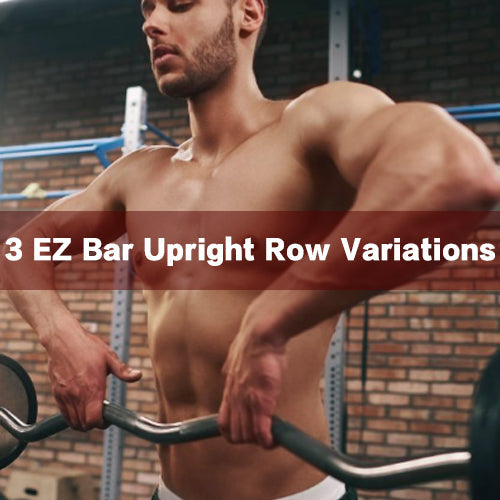
The dumbbell overhead press is also known as the dumbbell shoulder press or military press. Its exercise methods are divided into standing dumbbells and seated dumbbell press. And sitting dumbbells are very popular among fitness friends because they are easier to control the stability of the body. But whatever the exercise, the ultimate goal is to help the lifter create broad, rounded shoulders.
From the perspective of shoulder physiology and anatomy, we refer to the deltoid muscle located in the shoulder, including the front, middle and back three muscles. This action mainly targets the middle and front deltoids, which can strengthen the basic strength of the shoulders. When exercising, you are free to choose the weight, but you must proceed from your bearing capacity, otherwise your shoulder will be injured. Many friends are skeptical about improving the effectiveness of middle-beam exercise. This action can shape the shoulder muscles very well and make your shoulder line more beautiful.
Here you will know:
- Dumbbell Shoulder Press Muscles Worked
- How to Dumbbell Shoulder Press
- Benefits of Dumbbell Shoulder Press
- Common Mistakes
- 4 Dumbbell Shoulder Press Variations
- Dumbbell Shoulder Press Vs Barbell
Dumbbell Shoulder Press Muscles Worked

The dumbbell shoulder press is a highly effective exercise for developing muscle strength and size in various upper body areas, including the shoulders, triceps, biceps, and upper back. By incorporating this compound movement into your routine, you can significantly enhance your overall physique and upper body aesthetics. Unlike isolation exercises that target specific muscles, the dumbbell shoulder press engages multiple joints and muscle groups simultaneously, amplifying its effectiveness and yielding superior results.
How to Dumbbell Shoulder Press:Seated Dumbbell Press
- Begin by sitting on a bench with your back straight, or standing with your feet shoulder-width apart. Hold a dumbbell in each hand at shoulder height. Your palms should be facing forward and your elbows should be bent at a 90-degree angle. This is your starting position.
- Engage your core and maintain proper form throughout the exercise. Keep your chest up and avoid arching your back. Extend your arms and push the dumbbells up while lifting them overhead. Exhale during this movement.
- Continue to press until your arms are fully extended but not locked at the top. The dumbbells should be close to each other but not touching. Pause briefly at the top of the movement and focus on contracting the shoulder muscles.
- Bend your elbows and slowly lower the dumbbells back to the starting position, letting them drop to shoulder level in a controlled manner. Inhale during this phase.
Benefits of Dumbbell Shoulder Press

Shoulder Strength and Muscle Development: The dumbbell shoulder press is a compound exercise that primarily targets the deltoid muscles of the shoulders. By regularly performing this exercise, you can increase shoulder strength, enhance muscle definition, and promote balanced shoulder development.
Upper Body Muscle Engagement: In addition to the shoulders, the dumbbell shoulder press also engages other upper body muscles, including the triceps, biceps, and upper back. This compound movement helps promote overall upper body strength and muscularity.
Core Stabilization: The dumbbell shoulder press requires proper core engagement and stabilization to maintain balance and control throughout the movement. This contributes to improved core strength and stability.
Functional Strength: The shoulder press mimics pushing movements commonly performed in daily activities and sports. Strengthening the muscles involved can enhance your ability to perform tasks such as lifting, pushing, or carrying objects with greater ease and efficiency.
Common Mistakes
1.Excessive load
Choice overload leads to mistakes. Excessive weight causes swaying during the exercise. Experienced fitness enthusiasts reduce weight to maintain quality and prevent muscle engagement. Beginners should choose a reasonable weight for joint training. Since the shoulders are small muscles, heavy weights are unsuitable for this exercise.
2.Arms too forward
When training with lateral dumbbells, the position of the arms also directly determines the strength of the muscles. When doing lateral raises, the arms need to move forward to ensure the safety of the targeted muscles and training. However, the angle of movement also needs to be controlled. If the movement speed exceeds 30 degrees, the training action is like a front raise, and the front deltoid is the main force at this time.
4 Dumbbell Shoulder Press Variations
1.Arnold Dumbbell Press

- Start by sitting on a flat bench with a dumbbell in each hand at shoulder height. Palms facing body (natural grip) with elbows bent at a 90-degree angle.
- Your feet should be planted firmly on the ground, shoulder-width apart, engaging your core and maintaining an upright posture.
- Begin the movement by raising the dumbbells overhead, fully extending the arms while rotating the palms away from the body (underhand grip). Continue pushing until your arms are fully extended overhead and the dumbbells are nearly touching each other at the top.
- Pause briefly in this top position and focus on contracting the shoulder muscles.
- Slowly lower the dumbbells back to the starting position with a reverse motion. As you lower the weight, rotate your palms back to the starting position, facing your body.
2.Dumbbell Push Press

- Begin by standing with your feet shoulder-width apart and holding a dumbbell in each hand. Hold the dumbbells at shoulder height with the palms facing in (neutral grip).
- Engage your core, keep your chest straight, and your knees slightly bent. Begin the movement by bending your knees slightly, beginning with a small push-up or mini squat.
- Explosively extend the knees and hips, pushing the dumbbells upward. This upward drive should create momentum to help you lift the dumbbells overhead.
- With the arms extended, press the dumbbells fully overhead until the arms are fully extended and the dumbbells are directly over the shoulders. Palms should face forward at the top.
- Once you reach the top position, pause briefly to focus on squeezing your shoulder muscles. Lower the dumbbells to shoulder level by bending the elbows and slowly lowering the dumbbells under control.
3.Single-Arm Dumbbell Shoulder Press

- Begin by standing with your feet shoulder-width apart and holding a hex dumbbell at shoulder height with one hand. With your palms facing forward and your elbows bent at a 90-degree angle, keep your chest up throughout the exercise.
- Begin the movement by pressing the dumbbells up, fully extending the arms while keeping the arms in line with the shoulders.
- As you lift the weight overhead, make sure to keep your core tight, avoid leaning too much or sideways, and pause at the top briefly to focus on contracting your shoulder muscles.
- Bend your elbows and slowly lower the dumbbells back to the starting position, bringing them back to shoulder level in a controlled manner.
- Repeat the exercise for the required number of repetitions on one side, then switch to the other side and perform the same number of repetitions.
4.Incline Dumbbell Shoulder Press

- Adjust the FID bench to an approximately 45-degree reclined position. Sit on a bench and hold a dumbbell in each hand, resting on your lap.
- Carefully lie on your back on a bench while lifting the dumbbells to shoulder height, palms facing forward. This is your starting position.
- Engage your core and maintain good posture throughout the exercise. For stability, your feet should be firmly on the floor.
- Start the movement by pressing the dumbbells up, extending your arms while keeping them parallel to each other.
- Continue pushing until your arms are fully extended overhead and the dumbbells are nearly touching each other at the top. Maintain control throughout the movement. Pause briefly at the top and focus on squeezing the shoulder muscles.
- Bend your elbows and lower them to shoulder level, returning the dumbbells to the starting position.
Dumbbell Shoulder Press Vs Barbell
Both the dumbbell shoulder press and the barbell shoulder press are effective exercises for the shoulder muscles, but they have some key differences as follows:
Dumbbell Shoulder Press:
Range of motion: The dumbbell shoulder press allows for a greater range of motion because each arm moves independently. This helps improve mobility and mobility in the shoulders.
Muscle Imbalances: Dumbbells require each arm to work independently, which helps identify and correct any muscle imbalances between the left and right sides of the body.
Stabilizers: Since each arm works independently, the dumbbell shoulder press activates the stabilizer muscles more than the barbell press, which helps improve overall shoulder stability.
Core Engagement: The dumbbell shoulder press also engages the core muscles more, since you have to stabilize the torso throughout the exercise.

Barbell Shoulder Press:
Loads and Progression: You can generally lift more weight with a barbell than with dumbbells. This may be beneficial for strength gains and progressive overload.
Symmetry: The barbell allows for a more symmetrical movement pattern because both arms work together at the same time.
Grip position: A fixed grip position on the bar limits wrist and forearm mobility and may be a consideration for people with limited mobility.
Efficiency: Due to its ability to handle heavier weights, the barbell shoulder press is generally considered more effective for quickly working the shoulder muscles.
Ultimately, the choice between dumbbell and barbell shoulder presses comes down to personal preference, goals, and any specific limitations or requirements. Incorporating both of these variations into your training routine provides a well-rounded shoulder workout and helps target the muscles from different angles.


